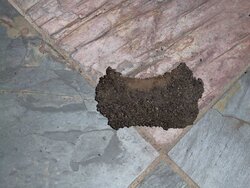After reading a broad variety of posts from pellet users, and having a couple of months experience with burning PA pellets and New England Wood pellets myself I have to ask if there is a pellet manufacturer in the New England area who consistently puts out pellet fuel that does not create clinkers or excessive ash and produces good heat. I've read the recent post regarding Pennington and see that there is some inconsistency in the reviews, but many people like them. While I understand that each plant may or may not have decent quality control, I'm still paying in the upper hundreds to heat my home and would like to lock on to a supply of efficient and reliable fuel. I'm trying not to play Russian Roulette with my fuel bill next year.
NEWP give us clinkers, and PA pellets give us a dirty stove (ash, like you would not believe!) Both give reasonable heat (PA pellets seem to be winning by a nose), and either way, the stove needs to be cleaned every 3 days. The honeymoon's over... I'd like to stretch my burn time to 4 or 5 days and have no clinkers and minimal ash. ( You're thinking "wouldn't we all!?" ) Seems to me we should be able to do this with good quality fuel.
I hate to say that regulations in the pellet industry would help. It would, in a way, but it would also inevitably drive up cost to the consumer. As it stands, the wood pellet industry is primarily self regulated. Increasing labeling requirements, mandates on what types of "biomass" are acceptable for home heating fuel are all things that consumers can ask for, and would be reasonable to expect of manufacturers. I would rather buy a product that tells me on the package exactly what I'm getting, even if it tells me that I might be getting extraneous ingredients, than buy a product again that says one thing, but after I open and use it, I know it's the other (hardwood blend... burns hot and fast, creates lots of ash= mostly pine... which is ok, accept that labeling reads 'hardwood blend').
I don't like subjective and implied labeling when it comes to my home heating fuel, especially when I'm buying it by the ton @ almost $300 per. We used to buy cordwood, and a cord had a legal measurement, and you knew when you stacked it that it measured up and that it was what you bought ( oak or pine ). I only expect the same degree of integrity in my pellet fuel. It's not a health related concern at all, it's a value ( quality for cost ) issue.
SO, my question remains; is there anybody out there who's found a pellet that can claim consistency in quality, heat output & efficiency (clean-burning) over more than one full heating season? If so, NAME THAT PELLET!
Thanks.... Lass
NEWP give us clinkers, and PA pellets give us a dirty stove (ash, like you would not believe!) Both give reasonable heat (PA pellets seem to be winning by a nose), and either way, the stove needs to be cleaned every 3 days. The honeymoon's over... I'd like to stretch my burn time to 4 or 5 days and have no clinkers and minimal ash. ( You're thinking "wouldn't we all!?" ) Seems to me we should be able to do this with good quality fuel.
I hate to say that regulations in the pellet industry would help. It would, in a way, but it would also inevitably drive up cost to the consumer. As it stands, the wood pellet industry is primarily self regulated. Increasing labeling requirements, mandates on what types of "biomass" are acceptable for home heating fuel are all things that consumers can ask for, and would be reasonable to expect of manufacturers. I would rather buy a product that tells me on the package exactly what I'm getting, even if it tells me that I might be getting extraneous ingredients, than buy a product again that says one thing, but after I open and use it, I know it's the other (hardwood blend... burns hot and fast, creates lots of ash= mostly pine... which is ok, accept that labeling reads 'hardwood blend').
I don't like subjective and implied labeling when it comes to my home heating fuel, especially when I'm buying it by the ton @ almost $300 per. We used to buy cordwood, and a cord had a legal measurement, and you knew when you stacked it that it measured up and that it was what you bought ( oak or pine ). I only expect the same degree of integrity in my pellet fuel. It's not a health related concern at all, it's a value ( quality for cost ) issue.
SO, my question remains; is there anybody out there who's found a pellet that can claim consistency in quality, heat output & efficiency (clean-burning) over more than one full heating season? If so, NAME THAT PELLET!
Thanks.... Lass



